The Pros and Cons of Using AP Style in Your Blog Posts

In the world of writing, there are a handful of style guides you can choose from. Some of them are more popular than others, but should you go with one of them, or not?
Today we'll be discussing the AP writing style, as well as any SEO or performance considerations, if any.
 30 Second Summary
30 Second Summary
You have several style guide options when writing online content. AP Style rules are well-known and trusted, but you'll need to pay for the guide and its yearly updates. You can also create your own style guide or write without one - both valid choices that let you be more flexible and casual. Your writing style should match your brand and audience. A financial site might need formal writing, while a daycare blog can be more casual and friendly. No matter which style you pick, it won't affect your SEO rankings - Google cares more about quality, relevance and user experience.
Different Style Guides
There are at least four major style guides used in writing in different settings.
1. The MLA style guide comes from the Modern Language Association and is widely used in university settings, specifically in the humanities departments. It's less of a writing style and more of a guide for things like academic citations, though. It leaves a lot of flexibility in place for self-expression in writing. Recognizing it is actually a good way to tell if a blog writer has an academic writing background, or if they developed their writing style in another way.
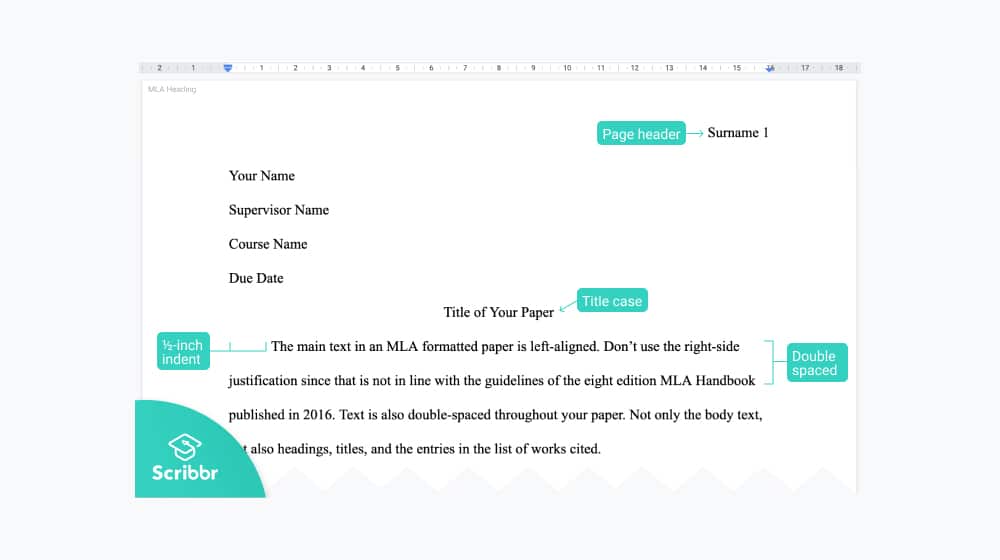
2. The APA style guide comes from the American Psychological Association. It's also an academic writing style guide, more focused on the research and sciences side of the student body. It's a good style guide, but it can be a little stuffy. When you read content from, say, PubMed, that's typically the style guide you're going to be reading. It's typically a little too formal for blog writing, in my opinion.

3. The Chicago style guide comes from the Chicago Manual of Style, and it's a very common style guide in the publishing industry. It's very comprehensive and very versatile, and it's widely used in business writing. It does tend to focus more on technical aspects of writing, like punctuation and capitalization, and it's a great starting point for getting people to learn the basics of technical writing.
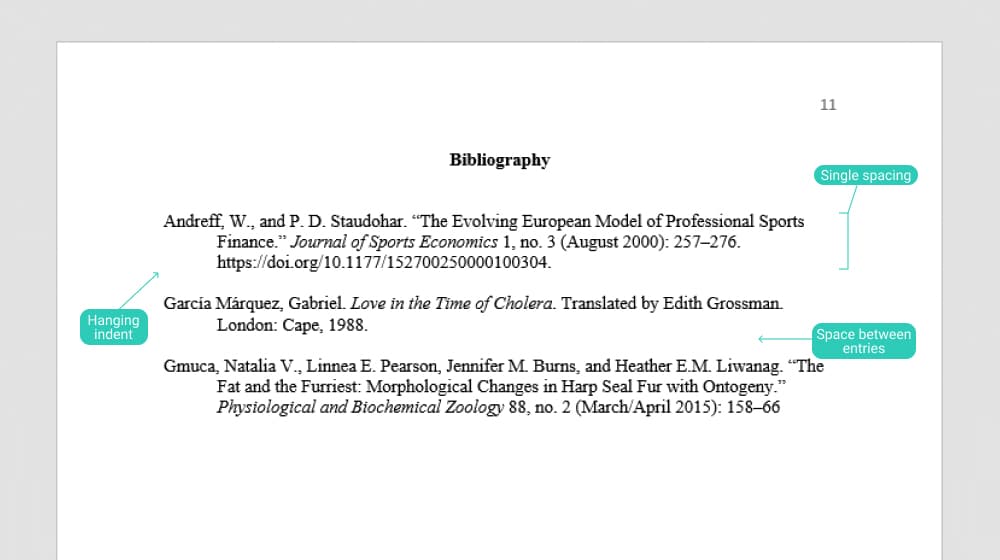
4. The AP style comes from the Associated Press Stylebook, and it's the go-to style guide for almost every prestigious English-language journalism outlet and news agency. It's frequently used by news bloggers and general bloggers with a journalism background, as well.
There is also a whole range of other custom style guides out there, like the American Medical Association style guide, the Wikipedia style guide, and even the Yahoo style guide. I'm broadly ignoring these, but I'll mention them later.
As you might be able to guess from the title of the post, I'm primarily concerned with the AP style guide for this discussion, but I'll discuss the others briefly here before we dig in.
The MLA style guide is a fine style guide… for academic writing. Academic writing, if it's been a while since you've had to write a paper for an English class, is a very different style of writing than blog writing. On top of that, the MLA style guide doesn't actually have much to say about grammar, word choice, or technical writing. It's mostly focused on properly citing works for a paper, and as such, really doesn't apply to blog writing. If I want to cite something here, I can quote it and link you to the source, I don't need to properly format an academic citation. At the end of the day, it's not really useful for blog writing, so we can scratch it off the list.
The same goes for the APA style guide, more or less. The APA style guide – not to be confused with the AP style guide – is focused on technical writing and presenting scientific information in a clear, consistent way. The proper way of writing chemical names, the proper way of formatting the math behind scientific studies, all of that is included. So let me ask you: how often have you ever had to do any of that? Unless you're actually a scientist writing those papers for scientific journals, you don't have to care about this style guide at all. And let me tell you, even if you ARE in that role, it's not the right kind of writing for a blog.
The Chicago style is fine, though it's a bit stuffy in my opinion. They will give you 50 pages of information on how, specifically, to use commas in various situations, but they won't tell you much of anything about conversational use of italics for emphasis, or bold to attract the eyes of a web-based reader skimming for value. It's very prescriptivist, and web writing requires more flexibility.
So let's talk about the remaining two.
The Pros and Cons of AP Style
The AP style has a lot of pros and a few cons when it comes to general blog writing, so let's examine them in detail.
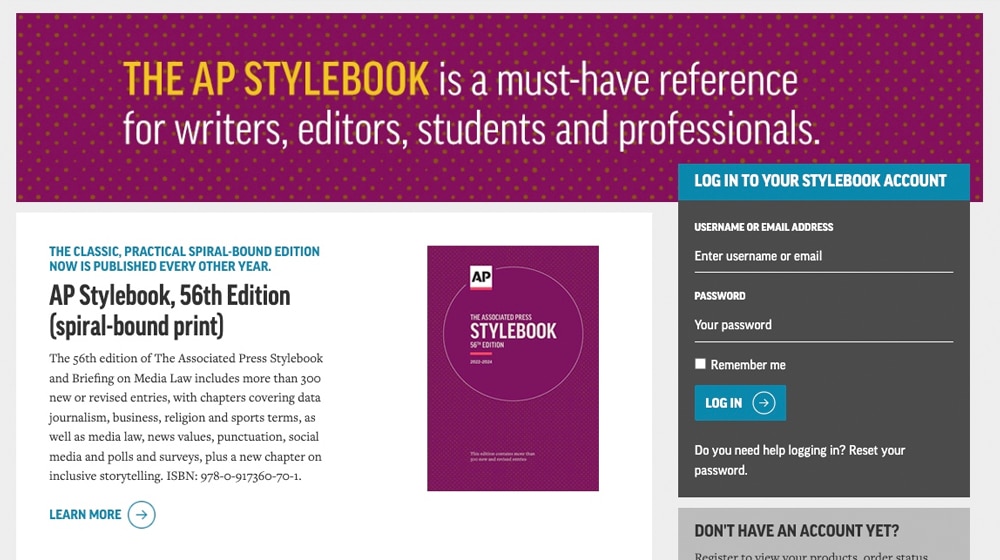
Pro: It's familiar to a lot of readers. The AP style guide is used on the Associated Press website, and as an extension, every single website and news agency that republishes and syndicates AP content. It's also broadly used by journalists who even occasionally contribute to the Associated Press, and it has been widely adopted by news agencies that aren't affiliated with the AP, just as a matter of professional consistency.
As such, millions of people on the web are familiar with the AP style. It won't read as odd or weird in any way. Is it ideal for your blog writing? That's another question.
Pro: Many writers are already familiar with it. This isn't important if you're the one doing all of your blog writing, but if you're planning to accept guest contributions, hiring a blog writer, or a mixture of writers, ghostwriters, and guest contributors, you want a consistent style guide.
AP style is familiar to many people who write professionally. They know at least the major elements of the guide, and if a minor detail slips through the cracks here and there, it ends up being minimally important.
Pro: The AP style guide includes dedicated sections for discussing specific topics, like sports, religion, and food. This means it may have dedicated rules specifically for your industry, and following those rules may be of benefit to you.
Specifically, people who are familiar with the industry will have internalized a lot of those rules simply through exposure. They might not know what they are or be able to tell you the rules, but when they read content that violates those rules, they might inherently recognize something wrong about the content. This can be a very subtle, very minor, but noticeable issue that affects customer trust.
Pro: There's a lot of technology out there to help you ensure that your writing meets the AP style guide. For example, the AP stylebook itself provides plugins for Microsoft Word, Outlook, and web browsers. They aren't free, though. In fact, a single license for just the Microsoft Word plugin is $70.
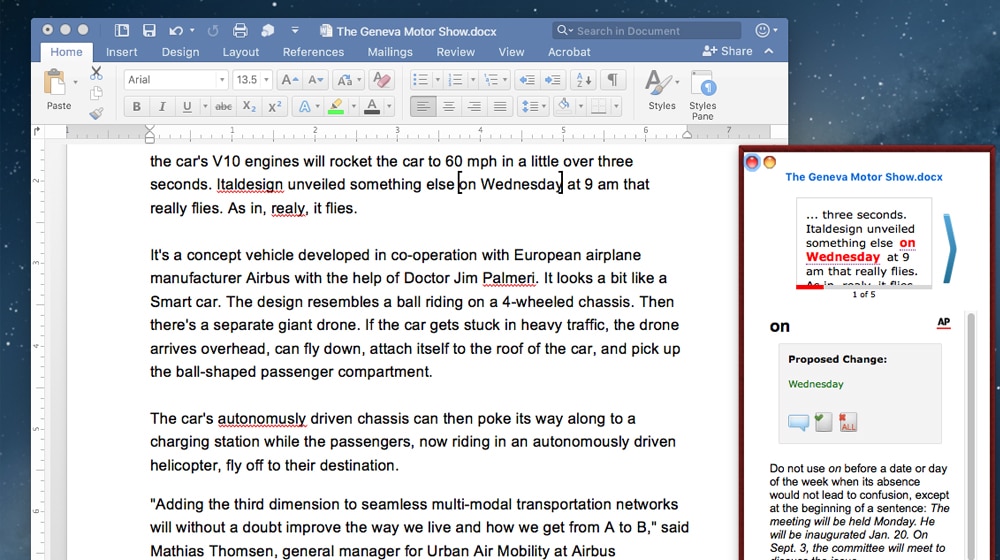
Con: The AP style guide isn't free. Those plugins aren't the only thing that costs you money. The AP style guidebook is $25 direct from the stylebooks website, though you may be able to find it cheaper elsewhere, or just pirate it if you really need to. Most of the basic information contained in it is available in guides online, though you won't be able to piece together the full guide.
Con: The AP Style Guide is updated annually. This is actually a minor problem that compounds the previous problem. The AP style guide is a living document. Every year, they change some guidelines and recommendations in it. For example, they changed their recommendation from "home page" to "homepage" not too long ago.
This is valuable because it means they keep up with the way language naturally evolves with time. New terms come into common usage, old ones fall out of style, usage changes, and the style guide wants to keep up with conversational language for maximum comprehension.
It's bad, though, in that you need to buy the style guide every year and understand the changes that are being made to it. If you let the style guide fall out of date, you'll eventually no longer be running a blog based on AP style, you'll be running an AP-derived style guide that will confuse newcomers who are familiar with updated AP.
Con: The AP guide is based on a different dictionary than other guides. Where most style guides simply use the Merriam Webster dictionary, the AP guide uses Webster's New World College Dictionary. This can lead to a few unusual word choice recommendations, though it's not generally going to be too disruptive.
Con: The AP style doesn't like the Oxford comma. This is one of my biggest personal gripes with the AP style. The serial comma, or Oxford comma, is the use of the final comma in a list of things. I personally find the comma necessary for clarification of disparate lists, but AP style leaves it out under the idea that the more characters there are in a piece, the more effort it is to read. I don't think this is a good reason to leave it out. This is an ongoing debate, though, so you can pick your own side here.
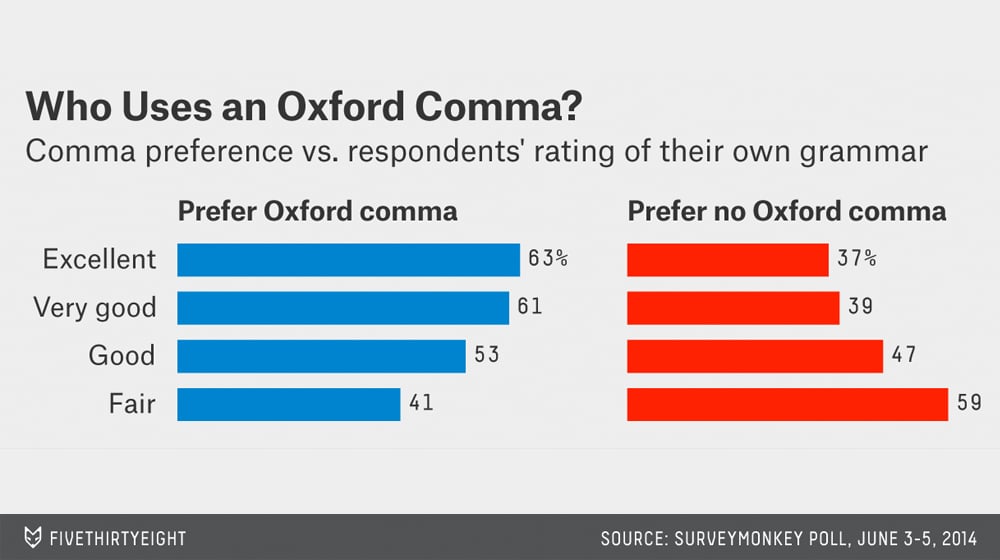
Con: You might turn off some writers who prefer a more casual form of writing. People who are used to writing technically proper but non-styled writing (like myself) don't necessarily want to be constrained by a style guide.
Creating Your Own Style
If you don't want to go with the AP style guide or one of the other existing style guides, you have two options. You can develop your own style guide (like how Wikipedia has its own), or you can go without a guide.
Developing your own style guide has a few benefits. First and foremost, it means everything published on your site – regardless of the author – will have a consistent style. Some readers may find different styles a little off-putting, so a consistent style will help.
One of the benefits of having a defined style guide is the ability to use it to filter guest contributions. There are a lot of, let's face it, poor quality writers out there running blogs. They love to submit guest posts and hope you'll publish them, and you can use your style guide as a reason to reject or otherwise forestall those submissions.
On the other hand, creating and maintaining a style guide is a lot of work. There's a reason all of the major guides have entire organizations maintaining them, or only get updated once or twice a decade. Depending on how "with it" you want to be, you might need to either have a minimalist style guide or put a lot of energy into keeping it up to date.
A minimalist style guide then just ends up being "basically AP but we're flexible" or more or less going without a guide.
The Benefits of Going Without a Guide
Personally, I prefer writing without a style guide at all. I'm a technically proficient writer, I understand how to write with proper grammar, and sure, I make the occasional mistake, but who doesn't?
One thing I've found over the last decade of blogging is that blog writing is generally a casual medium. The most successful blog posts tend to be conversational in style. I'm not writing a press release to whom it may concern; I'm having a one-way conversation with you, personally, directly. That's not something I can do with AP style.

Now, does my writing style work for everyone? Of course not. Some blogs prefer a different level of formality, different attention to detail, or a different perspective. That's fine!
Style is part of branding. A daycare company isn't going to adhere strictly to a style guide because they're invested in childcare. They want to show you that they're friendly, they're charming, they're creative, and they can care for a child in a welcoming environment. Running a blog like a 1800s boarding house is the opposite of the impression they want to give.
Conversely, a financial institution probably doesn't want to have an extremely casual blog full of personal anecdotes from the CEO. It's much better to have a more formal and factual blog style because that's how the company should operate. No one wants to feel like their money is being managed by the whims of a fickle guide; they want someone who makes decisions based on data and delivers consistent output.
Does AP Style or Chicago Style Affect SEO?
No. Writing style doesn't matter as much as the many other factors that Google places great importance on.
For example:
- Content quality.
- Relevance.
- EAT (Expertise, authority, and trust) and the author.
- Grammar and spelling.
- Originality.
- Whether or not your article satisfied the user.
- User experience (speed, mobile friendliness, design, etc.)
- Your internal and external links.
- Timeliness and whether or not it's up to date.
Articles are about information and communication. Sometimes, an AP-style article may even hurt SEO for some queries. If your content feels out of place for the query, or your strict formatting and bland language are off-putting to users and gets in the way of that communication, that can impact performance.
What Style is Best for You?
The question you have to ask yourself is this: how much importance do you put on consistency and rules?
- If you're a casual, flexible writer with a conversational tone, and you want a more casual, conversational kind of blog, there's not much incentive to go with a strict style guide. You can use one as a base and set a few ground rules for yourself, like whether or not you type out numbers less than ten, or how you format dates, or whether or not you use the oxford comma, but you don't need a 150-page document to guide every word you write.
- On the other hand, if you prefer having a set of rules to guide your writing, a style guide is perfectly fine. You just have to decide if AP style is the one you want to go with, or if you want to develop your own, or crib from an existing guide like the Wikipedia or the Yahoo guides.
Those of you reading this, chime in: Do you use a style guide on your site? If so, which one, and how did you choose? Share with us in the comments area below!



 30 Second Summary
30 Second Summary
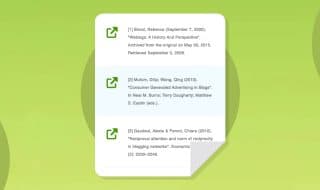


September 22, 2020
I think the writing style will depend on your target readers. If it's B2B, you might want to use a formal style of writing while if it's B2C and the target market is teens to young adults, you might want to have a casual style. I am a writer and have different clients with a different target market so I wrote my articles in different styles depending on my clients' needs.
September 23, 2020
Hey Eric! Well said. It's tough because tools like Grammarly tend to favor the 'formal' style of writing, as you call it. Using words like "Basically" or starting a sentence with "You know how..." will be flagged as grammatical errors, but, they also read a lot better and are more casual. If some B2C posts (like on fashion subjects, for example) are too matter-of-fact they will definitely sound dull and their engagement will probably suffer. I'd imagine search engines take this sort of thing into account too. Very different writing styles for different industries.
December 16, 2020
I want my readers to be more comfortable reading and communicating with me and doing it with a formal style won't fit my target market. I just don't want it to sound boring. I like how you write your style though.
December 18, 2020
Hey Ricky, thanks for the compliment 🙂
I think it's important to have a conversational tone, mostly formal but also talk like a human and not an encyclopedia.
It greatly depends on the subject matter too. Some industries can get away with that more than others.
A recipe blog can joke around more and have more personality than a blog about divorce law, as an extreme example.
I don't personally use AP style. I just try to make sure it's well-formatted, has no spelling or grammar errors, and sticks to the point.
February 11, 2021
Good info here. AP style seems better suited for college papers and not so much for blog articles.
February 11, 2021
Hey Esther!
Thanks for your comment.
There's some merit to some AP elements, such as footnotes / citing sources, but it's a little too rigid for blog posts.
There's nothing wrong with it, but there are enough things you have to optimize and check for when writing a high-quality blog post as it is.
They certainly don't need AP style to perform well, and it adds extra time and work to them without providing any extra value.
This is just my opinion, of course - there may be some academic or scientific sites that are better suited for this format.